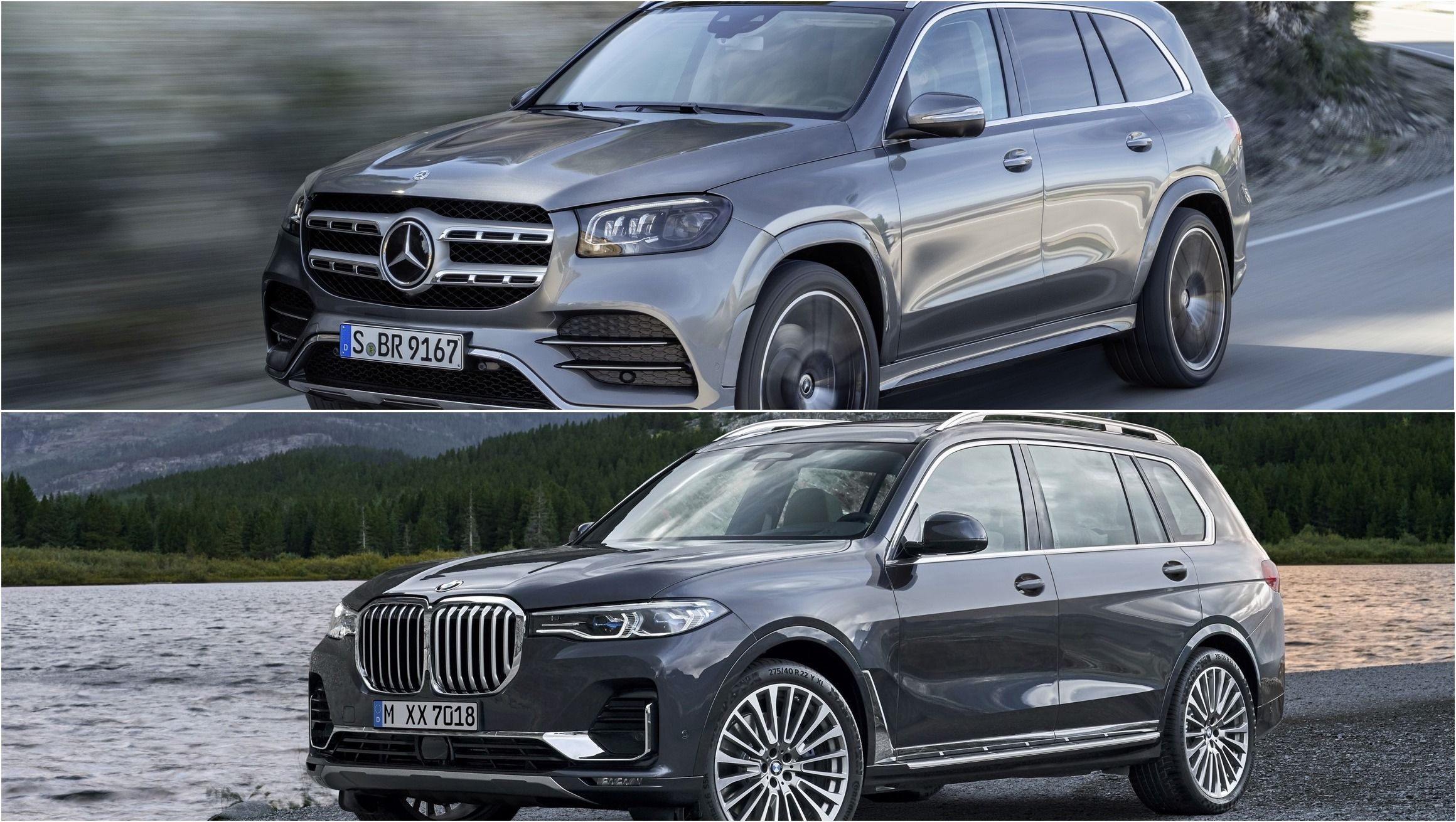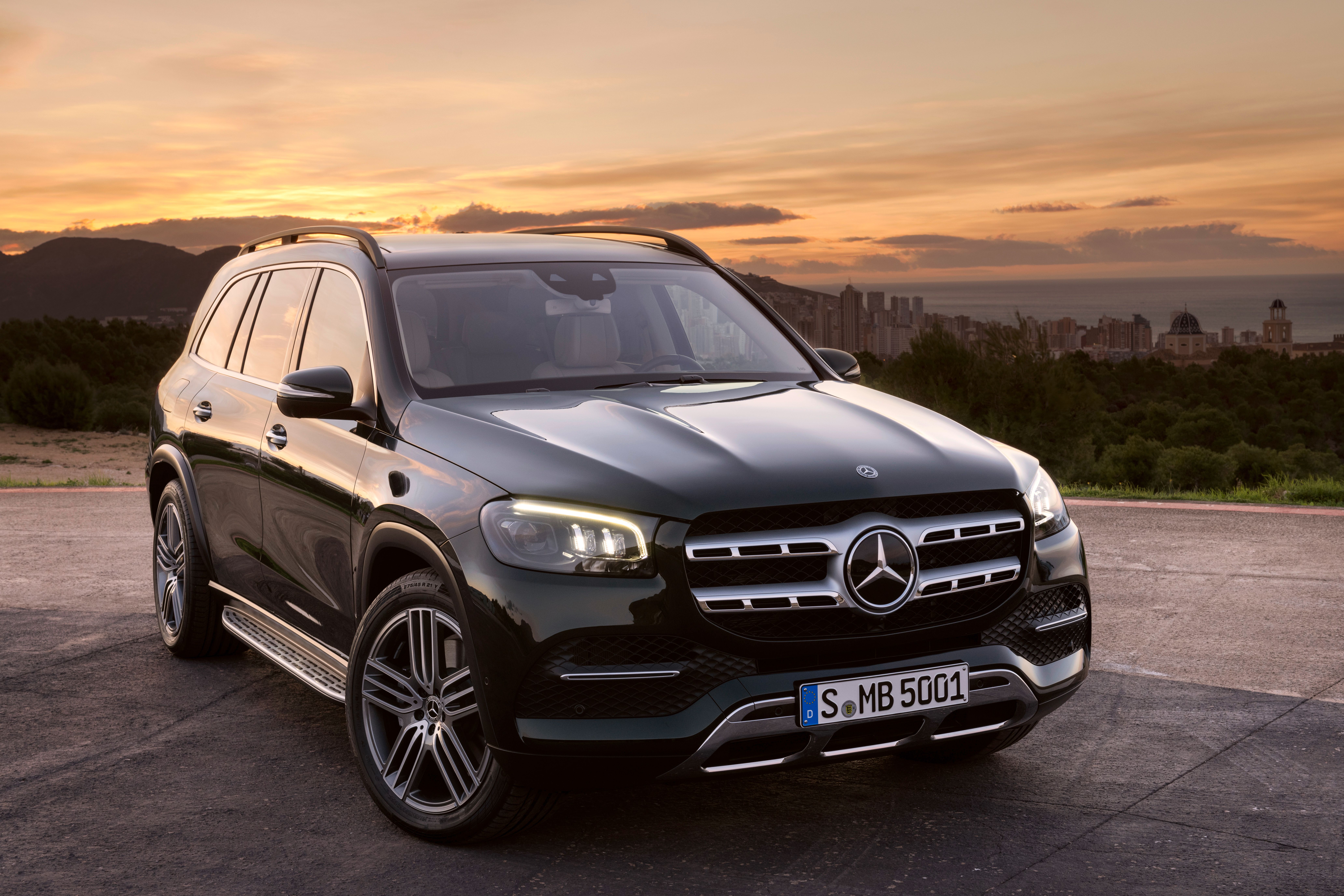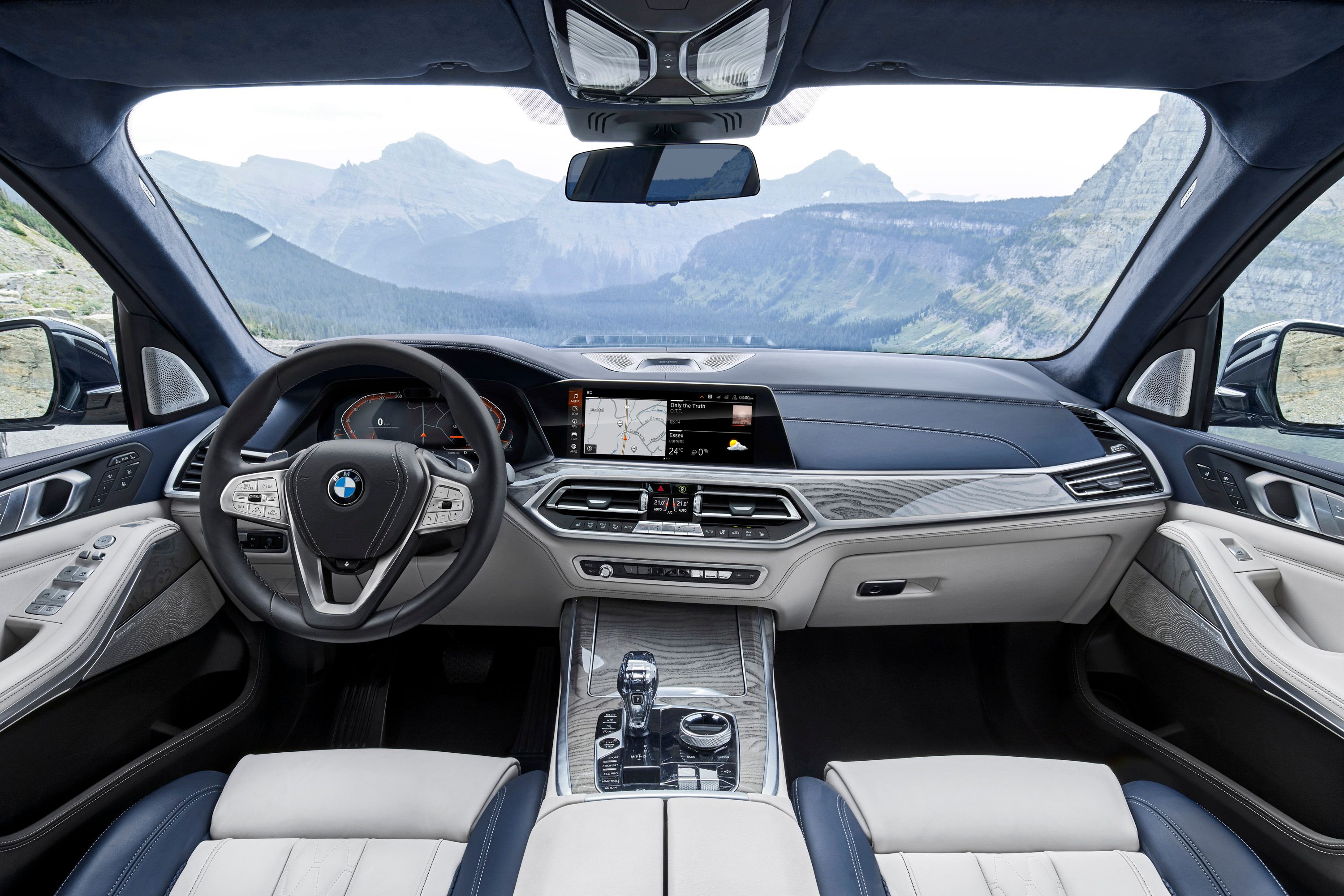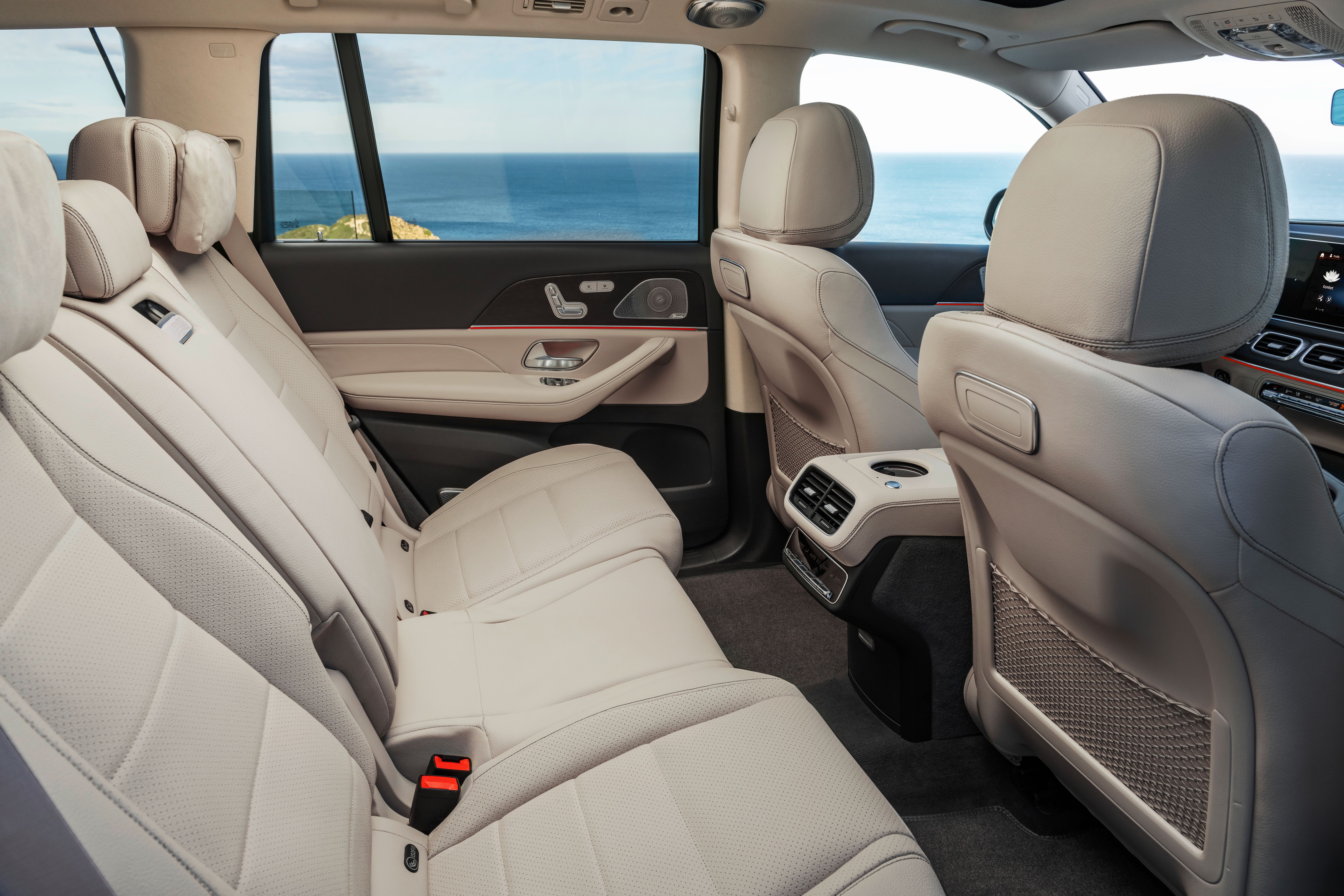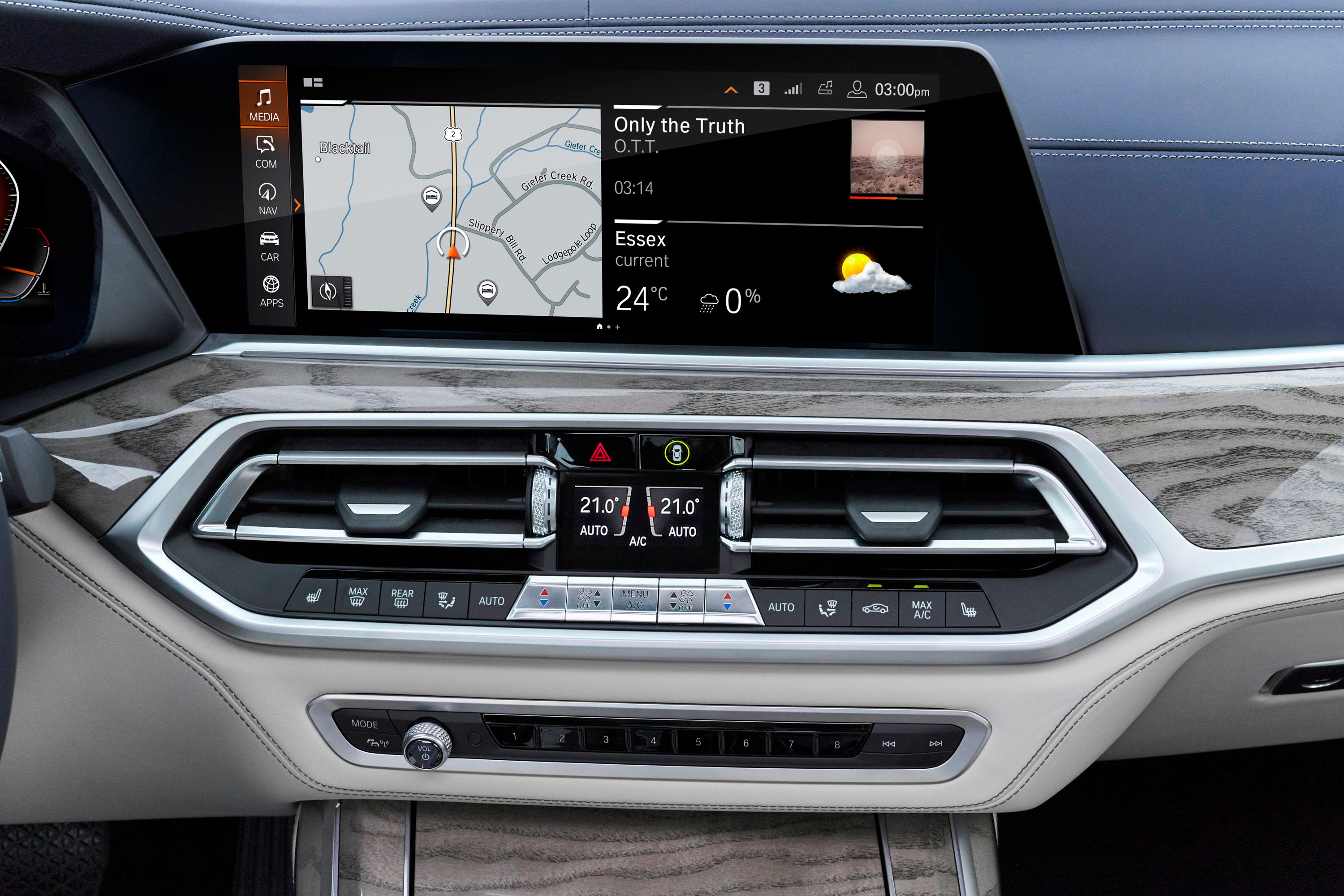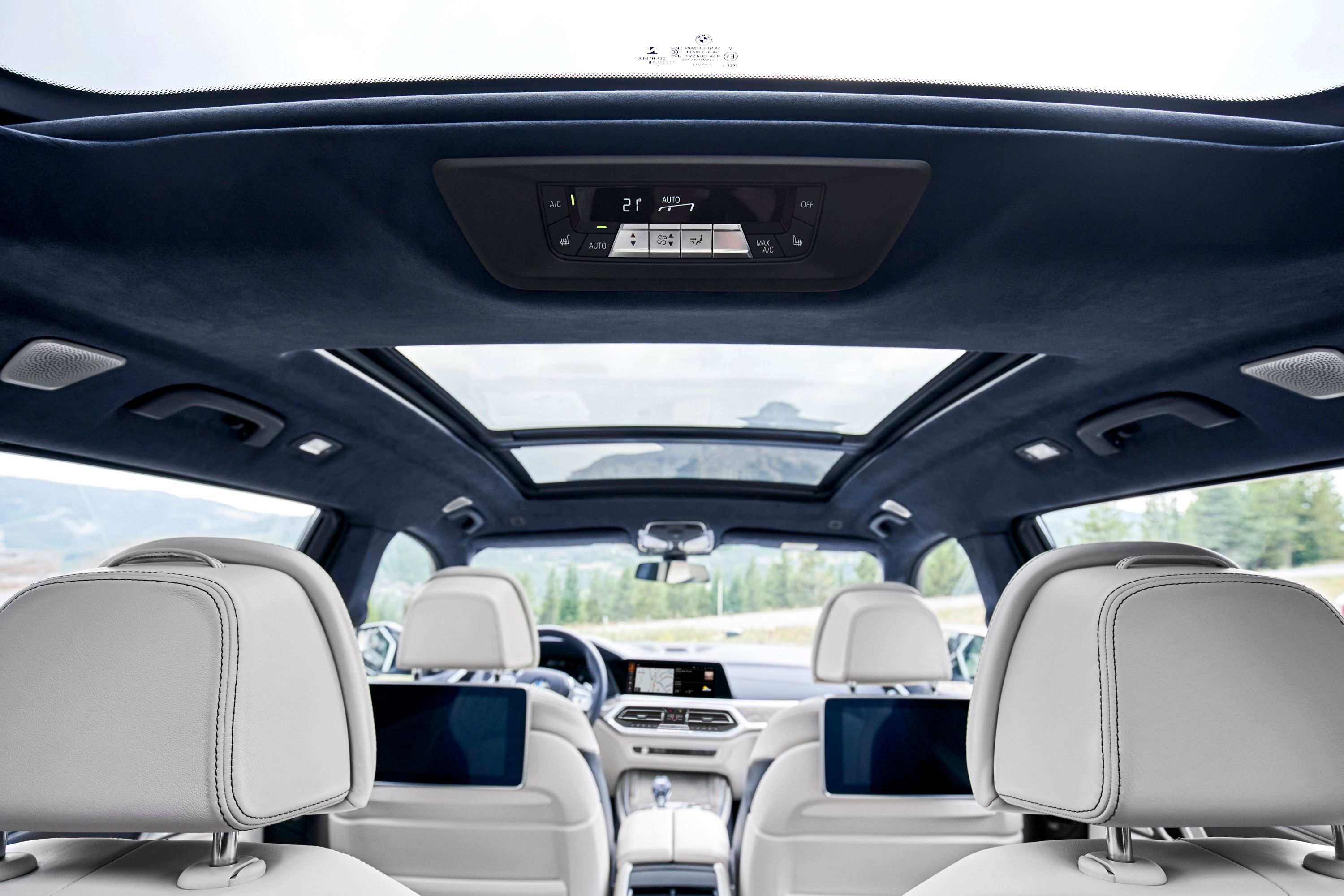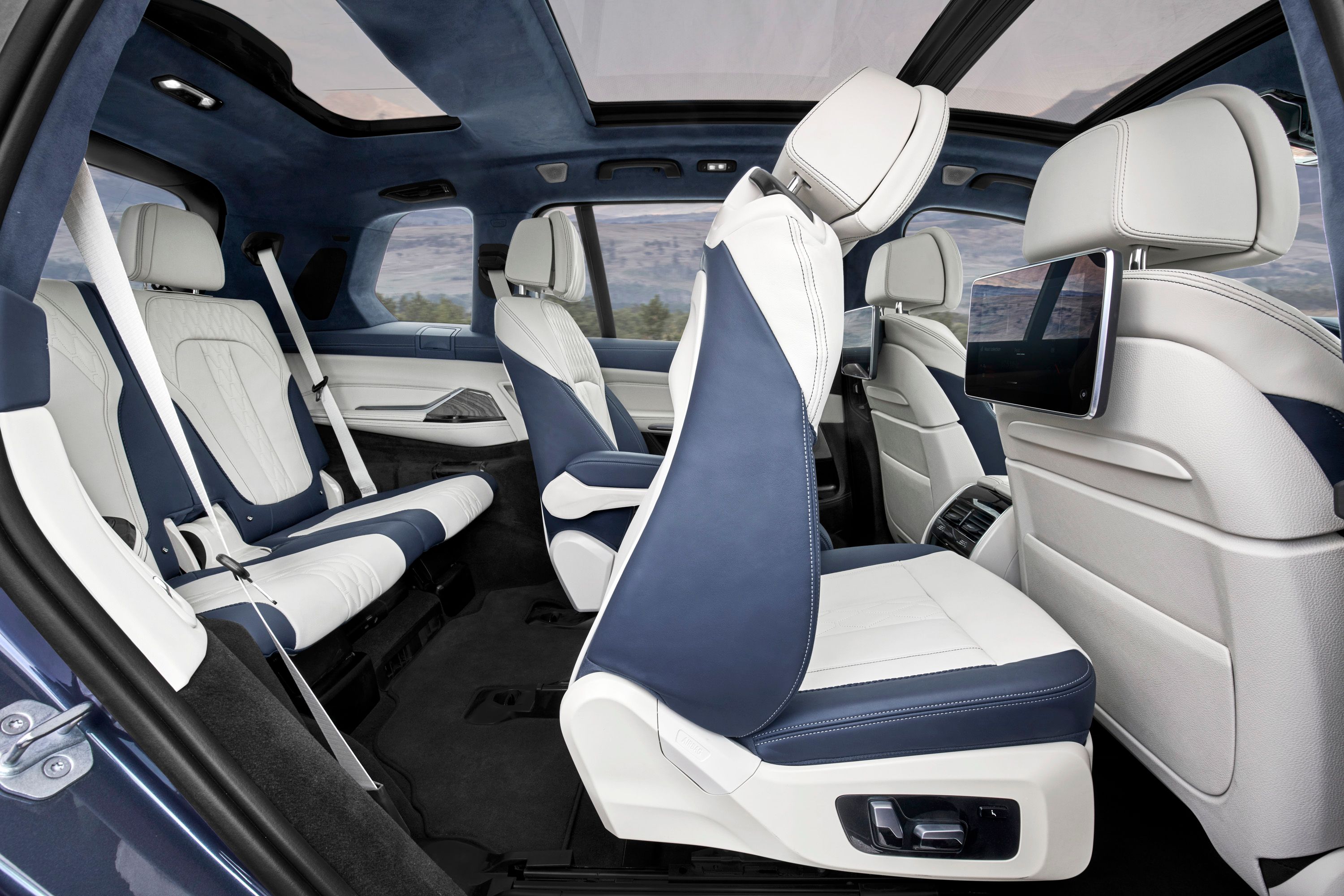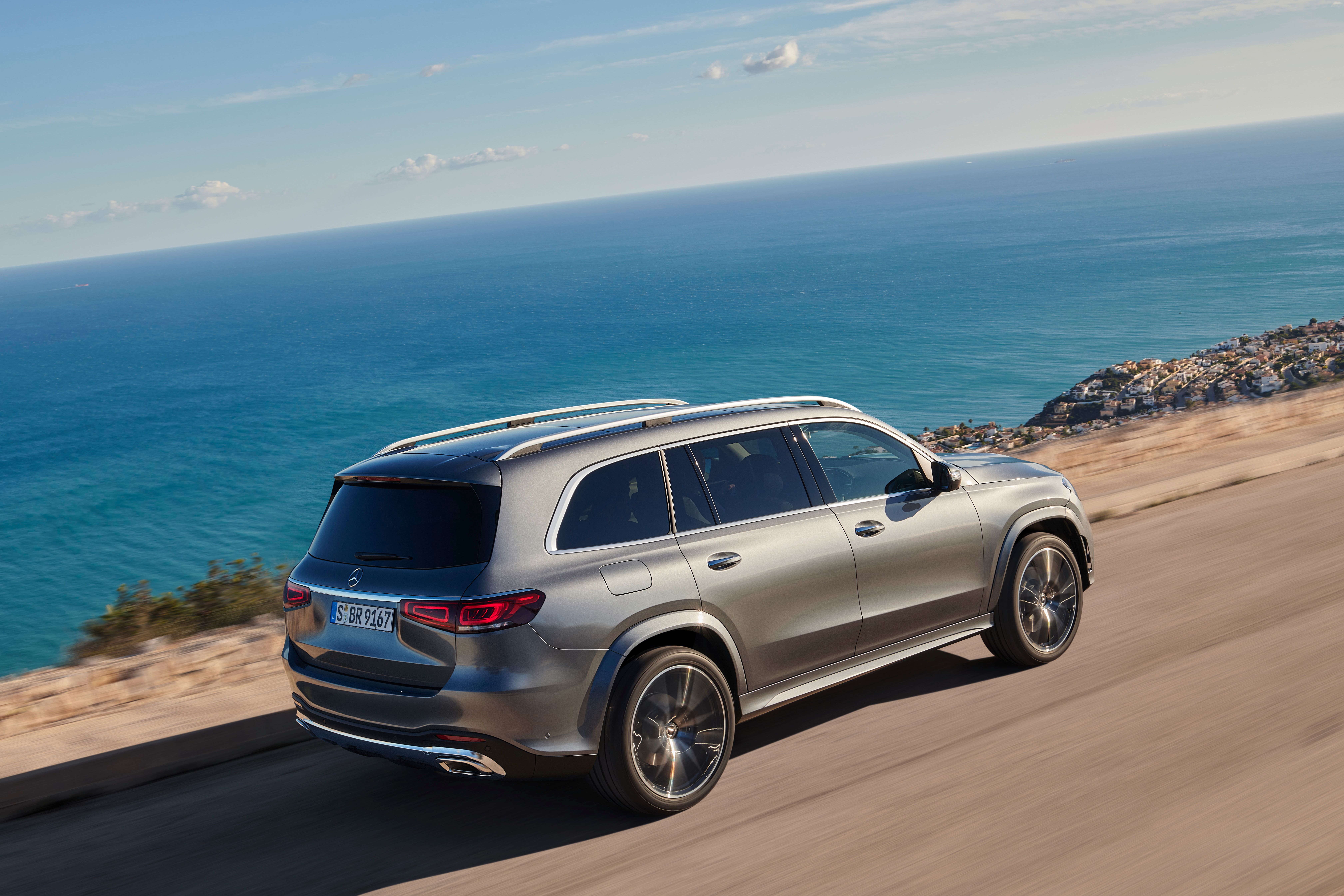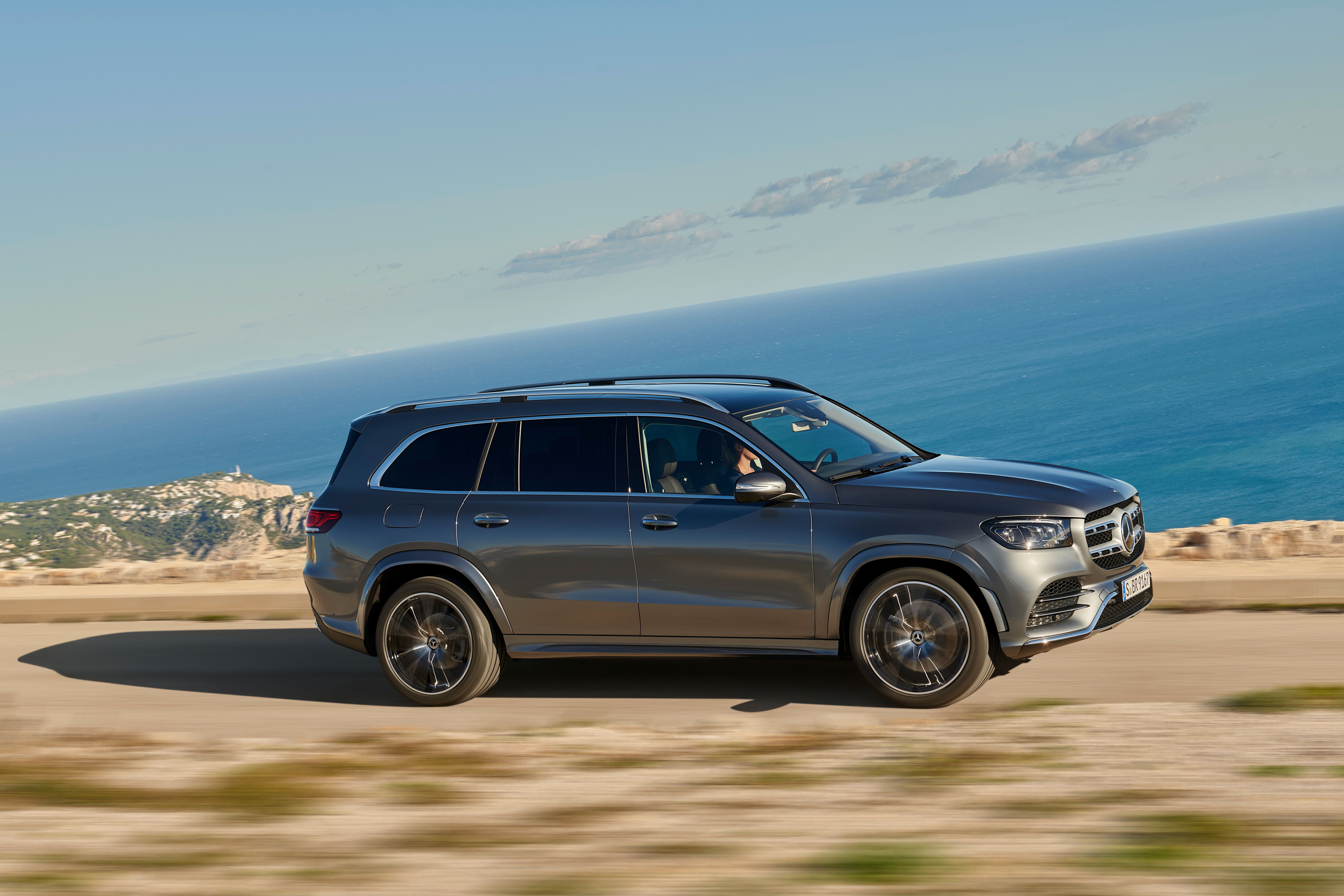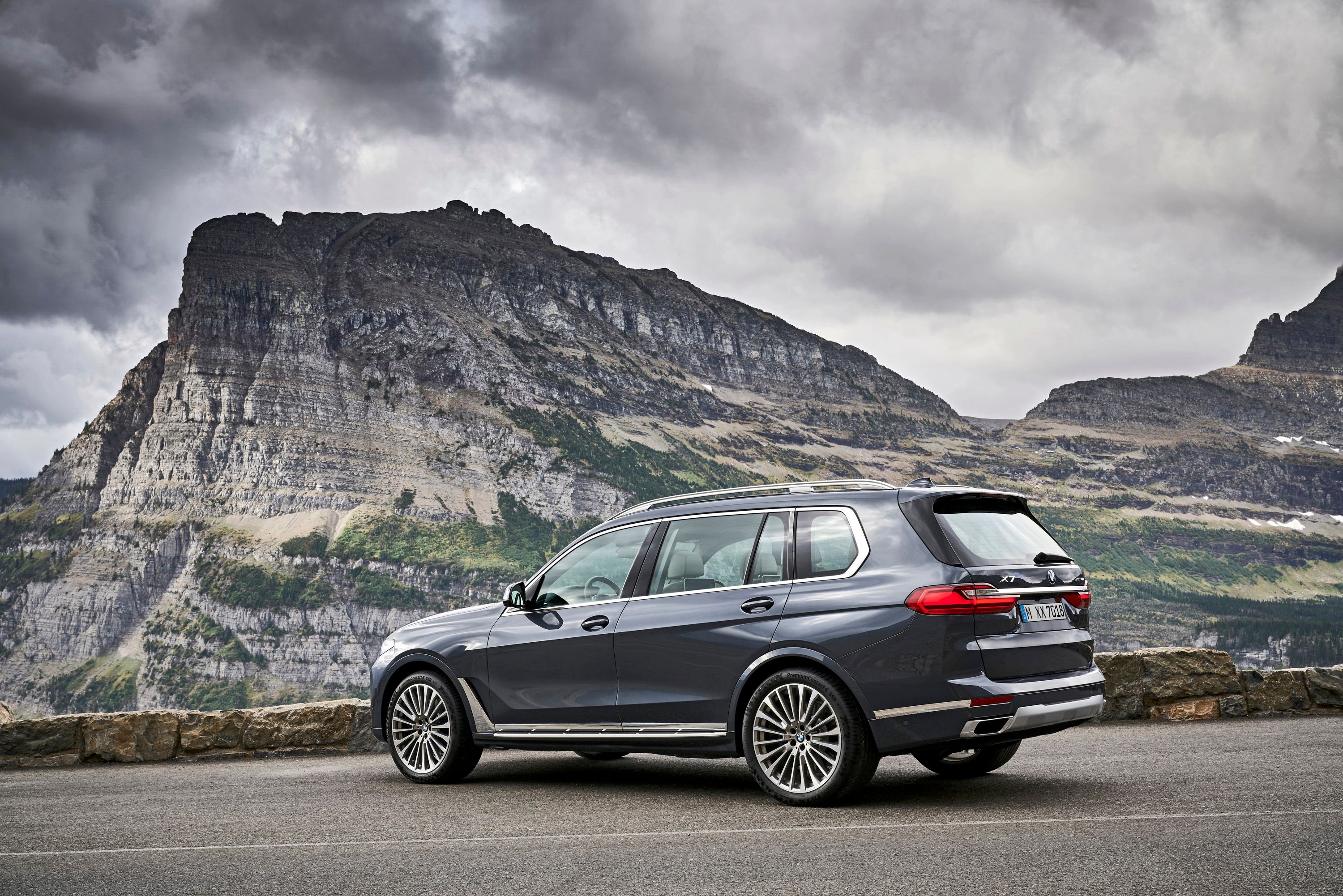Mercedes-Benz launched the third-generation GLS for the 2020 model, replacing the successful yet dated, six-year-old second-gen SUV. The GLS was redesigned from the ground up and its better in every department, but it also has a more challenging mission. While the old GLS had only the Cadillac Escalade and Lincoln Navigator to worry about, the third-gen GLS faces a new threat: the BMW X7. The company's largest SUV yet, the X7 was designed so that BMW can finally compete against the GLS, a nameplate that's been around since 2007.
The X7's arrival also means that the GLS is no longer alone in Europe. With the Cadillac Escalade and Lincoln Navigator not widely available here, the GLS had the entire market for itself all these years. This has come to an end in 2018 and Mercedes-Benz has a solid premium SUV to worry about in Europe. Is the GLS good enough for the modern and sporty X7? Let's find out in the comparison below.
Exterior
Mercedes' boxiest SUV after the military-inspired G-Class, the GLS retained its bulky aesthetics after the redesign. But the Germans streamlines some elements and added styling cues we've already seen on other vehicles. The front grille now has a rounder shape and includes thicker horizontal slats with bigger rectangular cutouts. The headlamps are about the same size, but now sports an almost rectangular shape and feature a new LED lighting pattern. The A-shaped bumper carries over, but the fake side vents are much larger now. The protection plate in the center was redesigned too.
Mercedes-Benz went with a slightly cleaner profile, much as it did with other nameplates in recent years. The sharper character lines of the old model were replaced with mildly sculpted dents between the door handles and the side skirts, while the rear haunches were rounded off as well. The roof remains boxy too, but the quarter window has a rounder frame, while the D-pillar becomes thicker toward the top. Around back, we can see Mercedes' recent two-piece, horizontal taillights, a bigger rear window, and a diffuser-like element. Overall, the GLS looks a bit sportier than before, but it's still a boxy, imposing SUV like a full-size hauler should be.
|
|
ids=839088,839089 |
no_overlay=false |
before_label=2020 Mercedes-Benz GLS |
after_label=2019 BMW X7> |
BMW is known for designing its crossovers with plenty of sporty features. The X3 and X5 are very good examples, but the German firm made an exception with the X7. With both the Mercedes-Benz GLS and Cadillac Escalade boasting massive, boxy designs, BMW had no choice but to design the X7 in a similar way. Up front, BMW's trademark twin-kidney grille grew even larger for the X7. Not only that, but it has more angular edges, and it's almost rectangular overall. The main feature that sets the X7 apart from the competition are the thin and long headlamps. These flank the upper corners of the grille and make the SUV seem wider, a much-needed feat given how tall the fascia stands from the ground. To BMW's credit, the X7's bumper is notably sportier than the GLS's. The tall side vents, the wide center outlets, and the chrome trim that wraps around the edges make the GLS look bland by comparison.
Onto the sides, the X7 adopted a standard full-size SUV design. There's a tall beltline, a boxy rear section with a really wide D-pillar, and utilitarian side skirt and wheel arch designs. But unlike the GLS, the X7 has an increasingly higher beltline toward the rear. This character line begins from the front fender, passes below both door handles, and ascends toward the outer edge of the taillight. This feature is borrowed from BMW sedans and gives the X7 a sportier look. The quarter window is narrower than usual, while the D-pillar is wider. Finally, the X7 has a more angled rear window, so it doesn't look quite as boxy as the GLS.
|
|
ids=839090,839091 |
no_overlay=false |
before_label=2020 Mercedes-Benz GLS |
after_label=2019 BMW X7> |
Just like Mercedes-Benz, BMW adopted the horizontal two-piece taillight design. But the Munich-based firm went with skinnier lights and a thin chrome strip that runs into the elements on the tailgate. The rest of the fascia isn't as stylish as the GLS though. The lower tailgate seems borrowed from a pickup truck, while the bumper is a bit too boxy for the rest of the rear end. I can't say it's bad, but the lower section just looks out of place.
Both SUVs are appealing, and both are solid options to the massive Cadillac Escalade, but I think that the GLS has the more balanced design overall. But for BMW's first attempt at the full-size SUV market, the X7 isn't bad at all.
|
|
ids=839092,839093 |
no_overlay=false |
before_label=2020 Mercedes-Benz GLS |
after_label=2019 BMW X7> |
But which one is bigger?
2020 Mercedes-Benz GLS vs. 2019 BMW X7 exterior dimensions
|
Length |
205.2 Inches |
202.8 Inches |
|---|---|---|
|
Width |
77.0 Inches |
78.7 Inches |
|
Height |
71.8 Inches |
71.0 Inches |
|
Wheelbase |
123.4 Inches |
122.2 Inches |
Interior
|
|
ids=839097,839098 |
no_overlay=false |
before_label=2020 Mercedes-Benz GLS |
after_label=2019 Mercedes-Benz S-Class> |
Both SUVs have decidedly modern interiors; there's no question about it. Also, both borrow from existing models in the Mercedes-Benz and BMW range. But do the GLS and X7 have features that make them stand out? Let's find out!
The GLS borrows many features from the S-Class, like the A/C vents placed on the center stack, the dual-display layout that stretches over more than half of the dashboard, and the tall center console. But it stands out on itself thanks to rectangular A/C vents (instead of round), additional triangular vents on each side of the displays, and grip handles on each side of the center console.
The X7, on the other hand, looks almost identical to the X5 inside the cabin. It has the same dashboard design with the same inserts on the center section, the infotainment display is set in the exact same spot, while the control panel in the center stack has the same hexagonal shape. We can see a similar steering wheel, almost identical door panels, and similar controls on the center console. I'm not saying the X5 looks dated, but the X7 should have included some unique features as well.
|
|
ids=839102,839103 |
no_overlay=false |
before_label=2020 Mercedes-Benz GLS |
after_label=2019 BMW X7> |
Luxury Features
When it comes to luxury features, the GLS is well equipped. Leather covers most surfaces, leaving only a bit of exposed plastic, but you can also opt for Alcantara. There's fine stitching all over the place, including contrasting thread, and Mercedes offers a few two-tone options, like the one shown here. Trim also varies depending on model and the options you select, including aluminum and wood veneer. All seats are wrapped in leather, including the two in the third row.
But you won't be disappointed with the X7 either. While it may look like an X5 inside, the X7 is packed with fine materials like SensaTec fiber or premium Vernasca leather. You can choose between nine different leathers, including Extended Merino packages. Colors include classy black or stylish Canberra Beige, Coffee, and even Ivory White. Pay extra, and you can get a two-tone cabin that combines Ivory White with Navy Blue and adds a blue dashboard and Alcantara headliner. If you're a fan of glass controls, you can get some for the start/stop function, iDrive Controller, and radio volume knob.
Technology
Like any modern Merc, the GLS comes with two massive 12.3-inch displays, one for the instrument cluster and one for the infotainment system. The latter features the company's MBUX system, which has the ability to learn thanks to artificial intelligence and received over-the-air updates. It also includes intelligent voice control with natural speech recognition and augmented reality for navigation display. Rear-seat passengers can use MUBX too thanks to a seven-inch Android tablet placed in the second-row center console. This is available with the Executive Rear Seat Package. A/C options include three-, four-, or five-zone automatic climate control that cover the entire cabin, all the way to the third-row seats. The GLS also comes with a wireless charging compartment in the center console, as well as additional USB ports, and a 64-color ambient lighting system.
If you're a fan of big displays, the BMW X7 has similar features. The infotainment display and instrument cluster also have 12.3 inches and high-quality resolution. Of course, they have different graphics, and I'd say that the X7's instrument cluster is nicer thanks to the unique rev counter and speedometer. It doesn't features standard gauge displays, but geometric bands that flank the navigation map. While it's not as intelligent as MBUX, BMW infotainment system includes everything you need to be connected all the time. You get access to driving, infotainment, and navigation information and you can opt to display data in four layouts. You can even create multiple pages for easier access with a simple swipe across the screen. Both wireless charging and Wi-Fi hotspot are standard in the X7, while the rear seat entertainment package includes a pair of 10.2-inch touchscreen displays, a Blu-ray DVD player, HDMI socket, and two headphone jacks. Needless to say, you won't get bored while traveling in the rear seat of an X7.
|
|
ids=839114,839113 |
no_overlay=false |
before_label=2020 Mercedes-Benz GLS |
after_label=2019 BMW X7> |
Passenger Comfort and Space
The Merc comes with electronically adjustable seats in all three rows, as well as an electronic system that moves the second-row seats forward to allow easier access to the third-row seats. While most SUVs have smaller seats in the third-row, Mercedes added fully-fledged seats in the GLS. Not only suitable for people up to 6.4 feet tall, but they're also heated for the very first time and feature two additional USB charging ports. The third row also has its own climate control vents in the roof. Mercedes also offers a six-seater version of the GLS with two captain's seats instead of a three-passenger bench in the second row.
The BMW X7 also provides seating for up to seven people. The second row comes seats with three seats, while the third row includes two more seats. Just like Mercedes-Benz, BMW offers captain's chairs for the second row, which turns the X7 into a six-seater. No matter the configuration, the second-row seats slide front and rear by 5.7 inches to increase legroom and provides easier exit. All seats in all rows are electrically adjustable, just like in the GLS. What's more, the backrests of the seats in the second and third rows can be folded down and raised electrically via switches located on the driver's side or in the cargo area, also like in the GLS.
Unfortunately, Mercedes-Benz has yet to release cargo space numbers for the GLS. Since it's bigger than the old GLS, it's safe to assume that it provides more room, but will it be able to compete with the X7? We already know that the Bimmer provides 11.5 cubic feet of space behind the third-row seats and that's less than what you get with the old GLS, rated at 16 cubic feet. The difference becomes smaller with the third-row seats folded flat, as the X7 provides 48.6 cubic-feet, while the old GLS offers 49.4 cubic-feet. With the second row folded flat, the X7 grows to a whopping 90.4 cubic feet. As impressive as it may sound, it's still less than what you get with the old GLS, rated at 93.8 cubic feet.
So while we don't know how much luggage we can stuff inside the new GLS, we already know that it will provide more room than the BMW X7. Let's face it; the bigger GLS won't have a smaller trunk so Merc's SUV will be the big winner here.
|
|
ids=839116,839117 |
no_overlay=false |
before_label=2020 Mercedes-Benz GLS |
after_label=2019 BMW X7> |
Drivetrain and Performance
Both the GLS and the X7 were launched with a couple of engines in the United States, and both are big on power. However, while the X7 features revised versions of inline-six and V-8 mill from the X5, the GLS comes with mild hybrid units, one of which is completely new.
The base GLS features a turbocharged, 3.0-liter inline-six that mates to an EQ Boost system. Borrowed from the CLS four-door coupe, the gas unit generates 362 horsepower and 369 pound-feet of twist. The EQ Boost system adds 21 horses and 184 pound-feet, which means that the drivetrain benefits from a whopping 383 horsepower and 553 pound-feet of torque at times.
The entry-level X7 also features a turbocharged, 3.0-liter six-cylinder mill, but it's less powerful than the GLS'. Specifically, Bimmer's engine cranks out 335 horsepower and 330 pound-feet, a 27-horsepower and 39-pound-foot deficit compared to the Merc. And that's before we add the EQ Boost. When the GLS runs at full blast, the X7 falls behind by 48 horsepower and a whopping 223 pound-feet of torque.
Both SUVs come with automatic transmissions, the GLS with a nine-speed and the X7 with an eight-speed. Both include an all-wheel-drive system.
But despite the extra power and the lower drag coefficient, the GLS is actually a tenth-second slower from 0 to 60 mph, if we are to believe the official ratings from the two companies. While the GLS needs 5.9 seconds to hit the benchmark, the X7 completes the run in 5.8 clicks. Both SUVs have a top speed of 130 mph.
Moving over to the range-topping models, both the GLS and X7 feature turbocharged V-8 engines. But while the X7 has the familiar 4.4-liter V-8 under the hood, the GLS comes with a new combo that brings together a 4.0-liter V-8 and an EQ Boost system. Borrowed from AMG models, this V-8 engine cranks out an impressive 483 horsepower and 516 pound-feet of torque. The EQ Boost adds an extra 21 horsepower and 184 pound-feet, taking the total output up to 504 horses and 700 pound-feet of twist for a limited time.
Just like the entry-level model, the range-topping X7 falls behind the GLS when it comes to output. The 4.4-liter V-8 generates 456 horsepower and 479 pound-feet of torque, a 27-horsepower, and 37-pound-foot deficit compared to the GLS. This gap increases to 48 horses and 221 pound-feet if we factor in the GLS' EQ Boost system.
Again, you're probably tempted to believe that the Merc is quicker thanks to its extra oomph, but the official ratings put the SUVs on par with a 0-to-60 mph sprint of 5.2 seconds. Their top speeds are also identical at 130 mph.
Just like the entry-level models, these trims come with automatic transmissions -- nine-speed for the GLS and eight-speed for the X7 -- and all-wheel-drive systems.
Mercedes-Benz has yet to release towing and payload figures for the new GLS, but we have these numbers from BMW, and it seems that the X7 isn't better than the old GLS. The X7 has a payload capability of 1,202 pounds versus the old GLS' 1,800-pound rating. The Bimmer's towing capability is rated at 7,500 pounds, on par with the outgoing GLS. This means that the new-generation GLS should be able to tow a bit more.
Who wins? Well, they're very similar when it comes to performance, but if you like the extra horsepower and the benefits for a 48-volt hybrid system, then the GLS is the better choice.
2020 Mercedes GLS vs BMW X7 Drivetrain Specs
|
|
2020 Mercedes-Benz GLS |
2019 BMW X7 |
|---|---|---|
|
Engines |
Turbo 3.0L I6 / Twin-Turbo 4.0L V8 Hybrid |
Turbo 3.0L I6 / Twin-Turbo 4.4L V8 |
|
Horsepower |
362 / 483 |
335 / 456 |
|
Torque |
369 / 516 |
330 / 479 |
|
Transmission |
9-Speed Automatic |
8-Speed Automatic |
|
Drive Type |
All-Wheel Drive |
All-Wheel Drive |
2020 Mercedes GLS vs BMW X7 Performance
|
|
2020 Mercedes-Benz GLS |
2019 BMW X7 |
|---|---|---|
|
0-60 |
5.9 / 5.2 Seconds |
5.8 / 5.2 Seconds |
|
Top Speed |
130 MPH |
130 MPH |
|
Drag Coefficient |
0.32 |
0.34 |
Which is the Better Buy?
Design-wise, both looks imposing and even sporty. Sure, the GLS' front fascia seems a bit bland when compared to the X7, but the Mercedes boasts the nicer rear fascia, an area where the X7 suffers because of its boxy bumper and fragmented tailgate. Move inside the cabin, and you'll find similar levels of luxury and tech. Passenger room won't be an issue no matter the choice. However, the GLS earns bonus points for unique design cues (the X7 is just a bigger X5) and the larger trunk.
Further reading
Read our full review on the 2020 Mercedes-Benz GLS.
Read our full review on the 2019 BMW X7.

